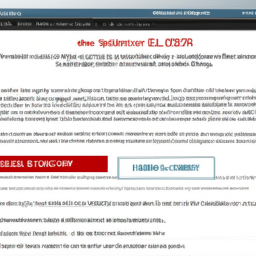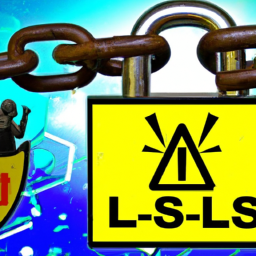Imagine your website as a fragile glass sculpture, delicately crafted and displayed for the world to see. Now, picture the devastating impact of that sculpture shattering into a thousand irreparable pieces. Just like that sculpture, your website holds invaluable data and information that must be protected at all costs.
Welcome to the world of hosting backup and restore, where the risks of delayed or incomplete actions can be catastrophic.
In this article, we will delve into the importance of data backup and highlight the dire consequences that can arise from delays or inadequacies in this process. We will explore the legal implications and compliance requirements that organizations face when it comes to safeguarding their data. Additionally, we will discuss the best practices for hosting backup and restore, including the crucial role of reliable hosting providers.
Finally, we will emphasize the significance of regular backup monitoring and maintenance to mitigate the risks associated with data loss.
Don’t let your website become a shattered sculpture. Join us as we uncover the risks and provide insights into the world of hosting backup and restore.
Key Takeaways
- Delayed or incomplete hosting backup and restore can result in data loss, downtime, financial loss, and damage to reputation.
- Non-compliance with legal requirements for website backup and restore can lead to data breaches, regulatory fines, and reputational damage.
- Organizations failing to protect customer data may face potential lawsuits and fines.
- Implementing regular backup schedules, offsite storage, and testing and validating backup files are crucial best practices to mitigate risks associated with backup and restore.
Understanding the Importance of Data Backup
Data backup is absolutely crucial in safeguarding your valuable information and ensuring its availability in case of any unexpected mishaps. Without proper backup measures in place, you run the risk of losing all your data, which can have devastating consequences for your business or personal life.
Data loss can occur due to various reasons such as hardware failure, accidental deletion, or malware attacks. In such situations, data recovery becomes extremely difficult or even impossible without a backup.
Having a reliable backup system in place allows you to restore your data quickly and efficiently, minimizing downtime and preventing any major disruptions.
Now that we understand the importance of data backup, let’s explore the consequences of delayed or incomplete backup.
Consequences of Delayed or Incomplete Backup
Neglecting to timely or fully secure your website’s information can result in severe repercussions. The consequences of delayed or incomplete backup can be detrimental to your business. Here are four risks you should be aware of:
-
Data loss: Without a proper backup, you risk losing all your valuable data, including customer information and transaction history. This can lead to a loss of trust and credibility among your customers.
-
Downtime: In the event of a security breach or system failure, restoring your website from an incomplete or outdated backup can take a significant amount of time. This results in prolonged downtime, impacting your online presence and potential revenue.
-
Financial loss: The cost of recovering from a data loss incident can be substantial. It includes expenses for data recovery services, potential legal fees, and the loss of business during downtime.
-
Reputation damage: Failing to safeguard your website’s data can tarnish your reputation. Customers may perceive you as unreliable and may choose to take their business elsewhere.
Ensuring timely and complete backups is crucial to avoid these risks. By doing so, you can protect your business and maintain the trust of your customers.
Moving forward, let’s explore the legal implications and compliance requirements related to website backup and restore.
Legal Implications and Compliance Requirements
When it comes to delayed or incomplete backup, there are legal implications and compliance requirements that you need to be aware of.
Data protection regulations and legal obligations mandate that you properly backup and restore your hosting data. Failure to do so can result in potential lawsuits and fines, as you may not be in compliance with the law.
It’s crucial to understand and adhere to these regulations to avoid any legal repercussions.
Data Protection Regulations and Legal Obligations
Complying with data protection regulations and fulfilling legal obligations is crucial to avoid potential consequences of delayed or incomplete hosting backup and restore processes. Failure to adhere to these regulations can result in severe penalties and reputational damage for organizations.
To emphasize the importance of data protection, consider the following:
-
Data breach incidents: Non-compliance with regulations can increase the risk of data breaches, leaving sensitive information exposed to unauthorized access.
-
Data recovery services: In the event of a data loss or system failure, organizations must have proper backup and restore procedures in place to ensure efficient recovery and minimize downtime.
-
Regulatory fines: Non-compliance can lead to hefty fines imposed by regulatory bodies, further impacting an organization’s financial stability.
-
Reputational damage: Failure to protect customer data can severely damage an organization’s reputation, leading to a loss of trust and potential loss of business.
Considering these points, it is crucial for organizations to prioritize data protection and legal compliance to mitigate the risks associated with delayed or incomplete hosting backup and restore processes. This includes implementing robust security measures, conducting regular audits, and staying updated with evolving data protection regulations. Failure to do so can result in potential lawsuits and fines.
Potential Lawsuits and Fines
Ensure you prioritize data protection and legal compliance to avoid potential lawsuits and fines that could jeopardize your organization’s financial stability and reputation. Failure to comply with data protection regulations can result in significant financial consequences.
For example, if customer data is compromised due to delayed or incomplete hosting backup and restore, your organization may be subject to costly lawsuits and fines. These expenses can quickly add up and have a detrimental impact on your bottom line.
Moreover, the negative publicity surrounding such incidents can severely damage your organization’s reputation, leading to a loss of trust from customers and partners.
To prevent these potential risks, it’s essential to implement best practices for hosting backup and restore, which will be discussed in the subsequent section.
Best Practices for Hosting Backup and Restore
To ensure the safety and security of your hosted data, it’s crucial to follow best practices for backup and restore.
Firstly, establish a regular backup schedule and utilize offsite storage. This will safeguard against data loss in the event of a system failure or disaster.
Secondly, test and validate backup files on a regular basis. This will ensure their integrity and reliability when needed.
Lastly, implement a comprehensive disaster recovery plan. This will enable you to swiftly recover and restore your data in the event of a catastrophic event.
By adhering to these practices, you can mitigate the risks associated with hosting backup and restore.
Regular Backup Schedule and Offsite Storage
Don’t neglect regular backups and storing them offsite to protect against the risks of delayed or incomplete hosting backup and restore. Regular backup frequency is crucial to ensure that you have the most up-to-date version of your data in case of any unforeseen events. By establishing a consistent backup schedule, you can minimize the risk of data loss and potential downtime.
Additionally, storing backups offsite provides an extra layer of protection, as it safeguards your data from physical disasters or security breaches at your primary hosting location.
To implement a robust backup strategy, consider the following sub-lists:
-
Regular Backup Frequency:
- Determine the appropriate backup frequency based on the rate of data changes and criticality of your information.
- Schedule backups accordingly, ensuring that you capture all necessary data at the desired intervals.
-
Secure Data Storage:
- Choose a reliable offsite storage solution that offers data encryption and complies with industry standards.
- Regularly verify the integrity of your backups and regularly update your offsite storage location with the latest data.
By following these best practices, you can mitigate the risks associated with delayed or incomplete hosting backup and restore. Now, let’s move on to the next section about testing and validating backup files.
Testing and Validating Backup Files
Backups are like the superhero cape of your data, but even superheroes need to be tested and validated to make sure they’re up to the task. Testing and validating backup files is a crucial part of the backup process. It ensures that the backup files are complete, accurate, and can be restored successfully when needed. The testing process involves verifying the integrity of the backup files by comparing them against the original data. This can be done through checksums or by performing test restores on a separate system. It is important to regularly test and validate backup files to identify any issues or errors early on, rather than finding out when it’s too late. By ensuring the reliability of your backups, you can have peace of mind knowing that your data is protected. Now, let’s move on to implementing a disaster recovery plan.
Implementing a Disaster Recovery Plan
Now that you understand the importance of testing and validating backup files, it’s time to move on to implementing a disaster recovery plan. This step is crucial in ensuring the safety and availability of your data in the event of a disaster.
Disaster recovery implementation involves creating a comprehensive plan that outlines the necessary steps to be taken in case of a data loss or system failure. It includes identifying critical systems, establishing recovery time objectives, and outlining the necessary procedures for restoring data and systems.
Within this process, you should consider creating a hierarchical list of personnel responsibilities and dependencies, as well as a communication plan for notifying key stakeholders. By incorporating disaster recovery planning into your hosting strategy, you can mitigate the risks associated with data loss and ensure the continuity of your business operations.
Now, let’s explore how you can further mitigate these risks by partnering with reliable hosting providers.
Mitigating Risks with Reliable Hosting Providers
Make sure you choose a reliable hosting provider, so you can mitigate the risks associated with delayed or incomplete backup and restore processes. Reliable hosting providers have robust data protection measures in place to ensure the safety of your website and its data. They employ advanced technologies such as redundant storage systems, real-time data replication, and automated backup schedules to minimize the chances of data loss or corruption.
These providers also have skilled technical teams who monitor and maintain the backup systems regularly, ensuring that backups are up-to-date and accessible when needed. By entrusting your hosting to a reliable provider, you can have peace of mind knowing that your website and its data are in safe hands.
Transitioning to the importance of regular backup monitoring and maintenance, it’s essential to stay vigilant and proactive in safeguarding your digital assets.
Importance of Regular Backup Monitoring and Maintenance
Regular backup monitoring and maintenance are crucial for ensuring the success and integrity of your backup system. By monitoring the backup process, you can promptly identify any issues or failures and take immediate action to rectify them.
Additionally, it’s important to update your backup strategies as technology evolves to ensure compatibility and effectiveness with the latest advancements in the field.
Monitoring Backup Success and Integrity
Ensuring the backup’s success and integrity is like keeping a watchful eye over a precious gem, safeguarding it from any potential damage or loss. Backup monitoring plays a crucial role in this process, as it allows you to track the progress and effectiveness of your backups.
By regularly checking the backup logs and reports, you can identify any potential issues or errors that may compromise the integrity of your data. This proactive approach enables you to take immediate action, such as re-running failed backups or resolving any underlying issues causing the failures.
Additionally, monitoring data integrity ensures that the stored information remains accurate and complete, without any corruption or tampering. By verifying the consistency and reliability of your backups, you can have confidence in the integrity of your data.
As technology evolves, updating backup strategies becomes essential to adapt to new challenges and ensure maximum protection for your valuable data.
Transitioning into the next section, let’s explore the importance of updating backup strategies to keep pace with evolving technology.
Updating Backup Strategies as Technology Evolves
Embrace the ever-changing landscape of technology by continuously updating your backup strategies to stay ahead and protect your precious data. As technology evolves, it’s crucial to adapt your backup strategies accordingly.
Here are four key considerations when updating your backup strategies in light of evolving technology:
-
Evaluate new backup solutions: Stay abreast of the latest backup technologies and assess if they offer improved efficiency, security, and scalability for your data storage needs.
-
Assess data growth and storage requirements: As technology advances, data volumes tend to increase rapidly. Regularly review your storage requirements and ensure your backup strategies can accommodate the growing data.
-
Enhance data security measures: With evolving technology, new threats and vulnerabilities emerge. Update your backup strategies to include robust security measures such as encryption and multi-factor authentication to safeguard your data.
-
Test and validate backups regularly: Regularly test your backups to ensure they’re functional and can be restored successfully. This will help identify any issues or gaps in your backup strategies and allow you to rectify them promptly.
By updating your backup strategies in line with evolving technology, you can ensure the continued protection and availability of your data.
Frequently Asked Questions
What are the common reasons for delayed or incomplete hosting backup and restore?
The most common reasons for delayed or incomplete hosting backup and restore include hardware failures, network issues, human error, and software glitches.
These factors can result in data loss, prolonged downtime, and compromised system performance. When backups aren’t performed regularly or are incomplete, the impact on performance can be severe. It can lead to data corruption, inefficient resource allocation, and increased vulnerability to security breaches.
Therefore, it’s crucial to prioritize timely and comprehensive backup and restore processes to mitigate these risks.
How can delayed or incomplete backup impact the overall performance of a website or application?
Delayed or incomplete backups can have a significant impact on the performance of your website or application. Without proper backup, you run the risk of losing valuable data, which can lead to downtime, loss of revenue, and damage to your reputation.
Additionally, incomplete backups may result in corrupted or outdated files, affecting the functionality and user experience.
It’s crucial to prioritize timely and complete backups to avoid these consequences of data loss and maintain optimal performance.
Are there any specific regulations or industry standards that require timely and complete backup and restore?
There is no specific statistic available on the number of websites or applications affected by delayed or incomplete backup and restore. However, it’s important to note that timely and complete backup and restore aren’t just best practices, but also regulatory requirements in many industries.
Various regulations, such as the General Data Protection Regulation (GDPR) in the European Union, require organizations to have processes in place for regular backup and restore. This ensures data security and compliance with privacy laws.
Meeting industry standards is crucial for safeguarding sensitive information and maintaining a trustworthy online presence.
What are some additional precautions or best practices that can be taken to ensure reliable hosting backup and restore?
To ensure reliable hosting backup and restore, it’s crucial to implement data redundancy measures. This can involve creating multiple copies of your data on different storage systems or locations.
Additionally, regularly backing up your data at frequent intervals is essential. This ensures that you have the most up-to-date backup in case of any issues.
By following these precautions and best practices, you can minimize the risks associated with delayed or incomplete hosting backup and restore.
How can a hosting provider help in mitigating the risks associated with delayed or incomplete backup and restore?
A hosting provider can assist in mitigating the risks associated with delayed or incomplete backup and restore by offering robust backup solutions and proactive monitoring. They can ensure regular and automated backups are performed, reducing the chances of data loss.
Additionally, they can provide reliable and fast restoration processes, minimizing downtime. The hosting provider’s assistance in these areas highlights the importance of backup and restore in maintaining the integrity and availability of your data.
Conclusion
In conclusion, when it comes to hosting backup and restore, delaying or incomplete actions can expose you to significant risks.
Just like a house without a sturdy foundation, your data is vulnerable without proper backup. Consider this: a recent study found that businesses that experienced a data breach without adequate backup had a 70% chance of going out of business within a year.
Don’t let your valuable data become a casualty. Follow best practices, choose reliable hosting providers, and regularly monitor and maintain your backups.
Safeguard your digital fortress and ensure your data’s resilience.















































































































